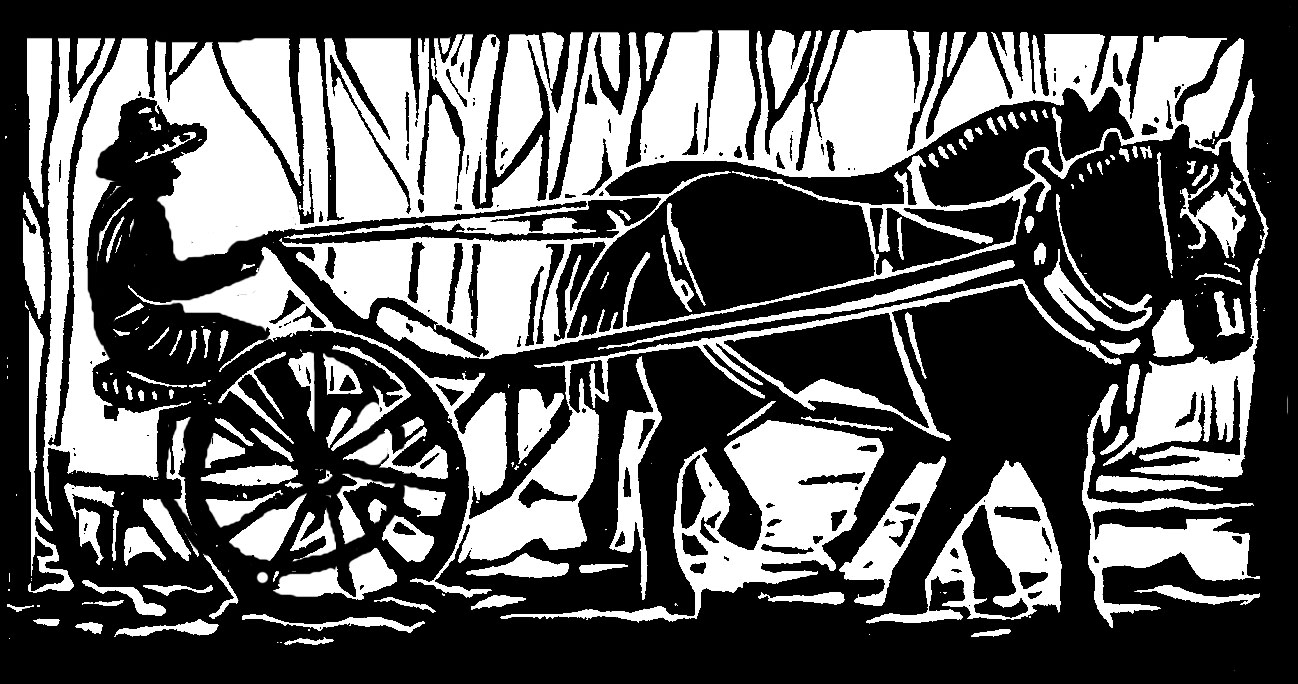On the farm we’ve got our black: our scratchy-bitey all black kitty, who is very good at hissing, especially when we suggest that he go outside, away from the warm woodstove, on a rainy fall day. We’ve also got our two black Percheron work horses, who could be mistaken for scary, if you focused on the size of their feet and teeth, rather than their charming work horsey natures.
We’ve got orange on our farm too: orange carrots and orange tomatoes and orangeish winter squash. But we haven’t got any of the Halloween orange: pumpkins, that is, which leads right to our Green Halloween.
My sweet farming spouse, generally an amiable, cheerful, easy-going fellow, has had, ever since I’ve known him, a deep philosophical argument with growing pumpkins for our CSA garden members.
“I’m not growing decoration,” he said early on, insulted at the very idea. “Look at all that food that could be grown on those pumpkin fields.” He’s gone so far in his philosophical argument, for example, as to calculate just how much potential food there is in the space it takes to grow the pumpkins for the Keene Pumpkin Festival. (Ten to fifteen thousand New Hampshire folks eating vegetables for six months!)
“We could grow some candy instead, for Halloween,” I tease him a little.
“Yeah, and grow some food coloring and high fructose corn syrup and packaging too!” My fellow is all riled up.
“But you love candy,” I point out.
“Yeah,” he grins, “Mars, Kit-Kat, Hershey’s, Reese’s Peanut Butter Cups. . .”
“Right, all those nice heirloom varieties.” I know his fondness both for sweets, and for growing heirloom varieties of vegetables. “How about growing a nice heirloom pie pumpkin?”
“Anything you can cook with a pumpkin you can make with butternut squash. Nobody can tell the difference. Almost all commercial pumpkin pies are made out of butternut squash,” he claims.
I remind him of my father’s story of growing up: how they carved the pumpkin Halloween day, and made pumpkin pie the next morning. “Surely back then they had really interesting rare pie pumpkins. You could rediscover a great variety.”
My spouse is nodding suddenly, excited. “Yeah, yeah, come look at this!” He takes me out to the middle of the winter squash patch, lifts a big leaf. Underneath is a little round greenish turning to orangeish something, in the midst of all the butternut and acorn and dumpling squash.
“See?” he whispers.
“Yes,” I whisper back, mystified. “But it looks like a pumpkin.”
“It is!” he whispers joyfully. “I planted one secretly! So we can carve it! On Halloween! And make a pie! The next day! Won’t that be fun?”
I shake my head, laugh. I don’t know if the secret is from me or from our young daughter, then only three, or from the world of philosophical arguments and CSA members who innocently inquire if we grow pumpkins. In any case, I give my fellow a kiss in the middle of the winter squash- secretly- growing- one- nice- heirloom- pie- pumpkin patch. We’ve got our black, we’ve got our orange, we’ve got our green.
“And in your spare time,” I add, “you could organize the great Keene Pumpkin Pie Recipe Contest, to be held the day after the great Keene Pumpkin Festival.”
“Yes! With a special category, for all local ingredients! You could get eggs, milk, cream, butter, maple syrup, the pumpkin, hmm… spices. Hey, how about dill or cilantro?” he says, as we walk past the last planting of those two herbs.
“Ooh,” I wince a little. I love pumpkin pie, my grandmother’s recipe: cinnamon, nutmeg, cloves.
“I’m not sure about winning the contest with that combination.”
“Oregano?” he says. “Marjoram? Summer savory?”
“Oof,” I say. “You’d better stick to growing pumpkins.”
“Oh no,” he says, “I don’t grow pumpkins."
Originally published in the Monadnock Shopper News, Oct 31 - Nov 6
Photo thanks to Rich Jacob

